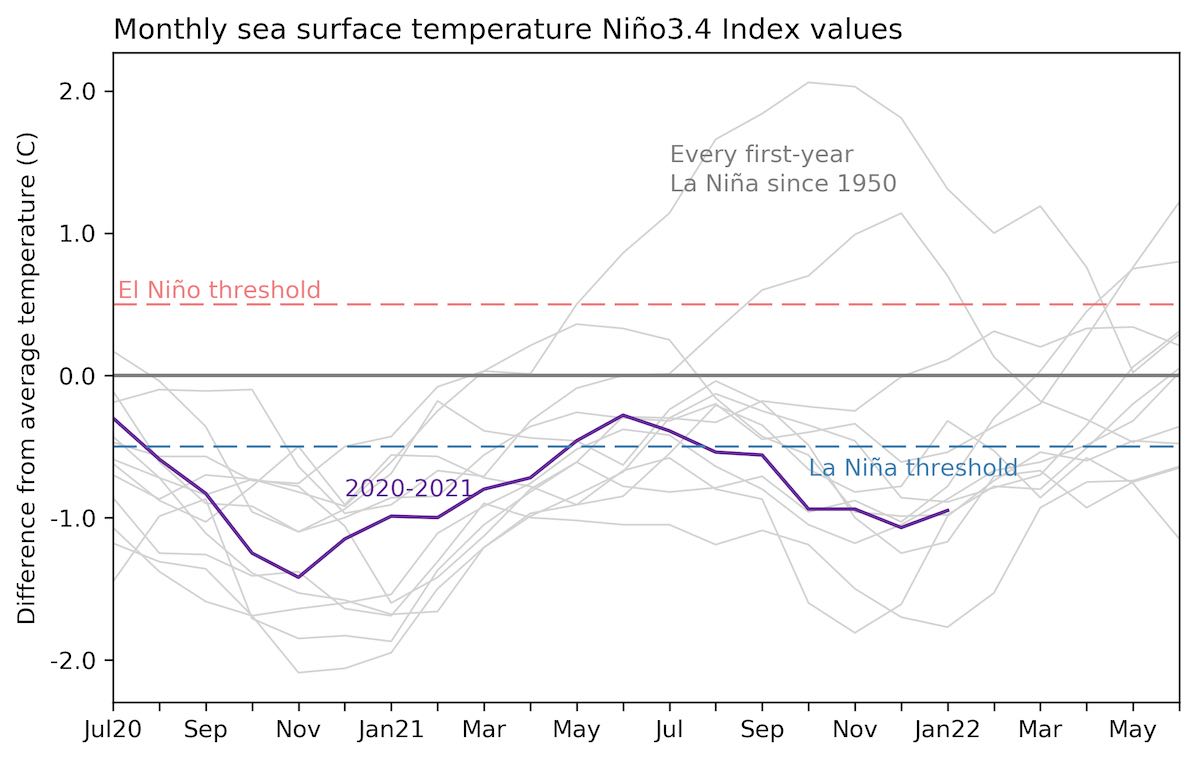
La Niña is likely to hang around through the spring, with a transition to neutral favored for the May–July period. Hop in, and we’ll cruise through some updates on current conditions and the recent past!
On the road again
The November–January average Oceanic Niño Index, that is, the three-month-average sea surface temperature anomaly in the Niño-3.4 region of the tropical Pacific, was -1.0 °C. Anomaly means the difference from the long-term average; long-term is currently 1991–2020. This marks our fifth three-month period in a row with an Oceanic Niño Index that exceeds the La Niña threshold of -0.5 °C. Passing this mile marker means this La Niña has persisted long enough to be awarded a bold blue color in our historical table. Congratulations, La Niña 2021–22, already the second La Niña of this young decade.
Will there be a third? We still don’t have a very clear picture of that. Right now, there’s a 77% chance that La Niña will last through the spring (March–May), largely based on computer model forecasts and bolstered by a recent uptick in the trade winds. Neutral is most likely for summer (June–August), with a 57% chance. By fall (September–November), neutral still has the edge, but forecasters can’t currently give any category a strong chance.
Every day is a winding road
ENSO (El Niño/Southern Oscillation, the entire El Niño/La Niña system) is a seasonal forecaster’s best friend because it changes atmospheric circulation in (somewhat) predictable ways, allowing us to get an early picture of how the average seasonal climate might turn out. For example, during La Niña, the Pacific jet stream tends to be retracted to the west, and high pressure often forms south of Alaska. These effects tend to lead to a colder Northwest/warmer Southeast pattern over North America, along with more rain and snow than average in the Pacific Northwest and Ohio/Tennessee valleys, and drier conditions across the southern tier of states.
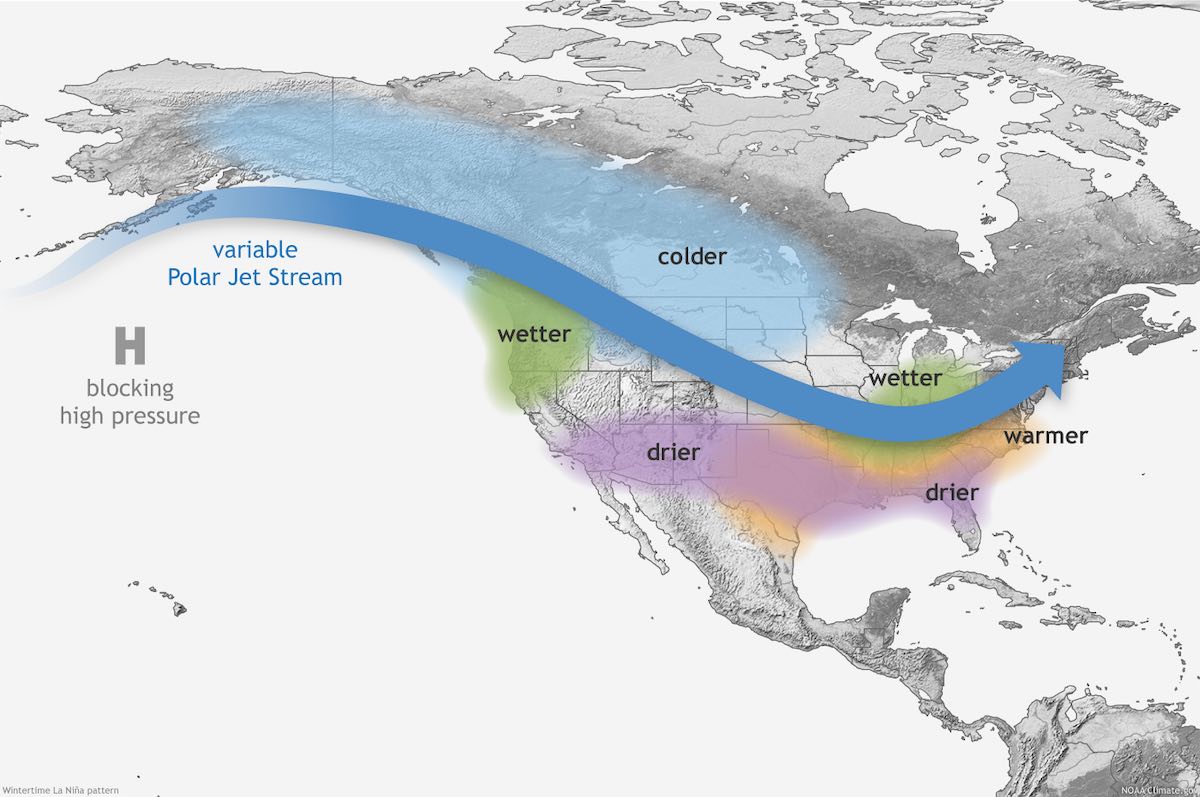
I’m sure you noticed all the qualifying words in the previous paragraph. “Somewhat,” “might,” “tends,” etc. Believe me, I wish we could make stronger statements and more confident predictions! But I try to remember that it’s pretty amazing that we can get any idea of what the average weather might be like months into the future, given our complex and wildly chaotic Earth system. La Niña doesn’t guarantee warmer weather in the southeast or dry conditions in southern California—far from it—but it makes those conditions more likely overall.
There’s more that goes into the seasonal forecast than ENSO, of course, like trends, or other climate patterns. Check out Mike Halpert’s post on the winter outlook for an overview of the seasonal outlook process, and a set of maps that illustrate just how much outcomes can vary from one La Niña event to another. That said, ENSO has a big imprint on the seasonal forecast. You can see the Climate Prediction Center’s outlook for November–January 2021–22 here.
The November–January average temperature ended up looking a lot like what we’d expect during La Niña: colder than average through Canada, warmer over most of the US. Not exactly the same, but reasonably similar.
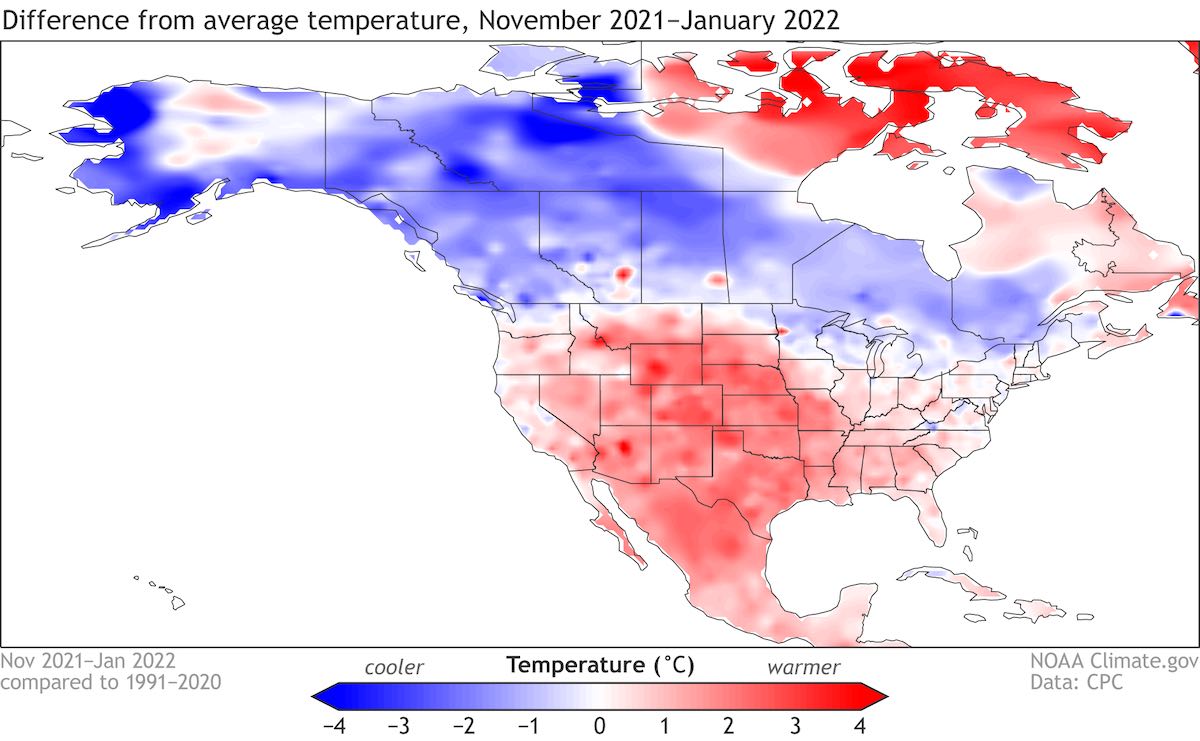
Seasonal climate averages matter—for example, your heating bill is going to reflect if the winter was warmer or colder than average overall. However, sometimes it’s hard to see the forest for the trees, like when you have a December that’s 6° F warmer than average, followed by a hair-pin turn into a January that’s 2° F colder than average. (Hello, Annapolis area!) More on this just a mile down the road.
The precipitation map for November–January also looks a fair bit like the typical La Niña impacts map for this season. Lots of rain and snow in the Pacific Northwest, substantially drier than average through the south-central and southeastern states.
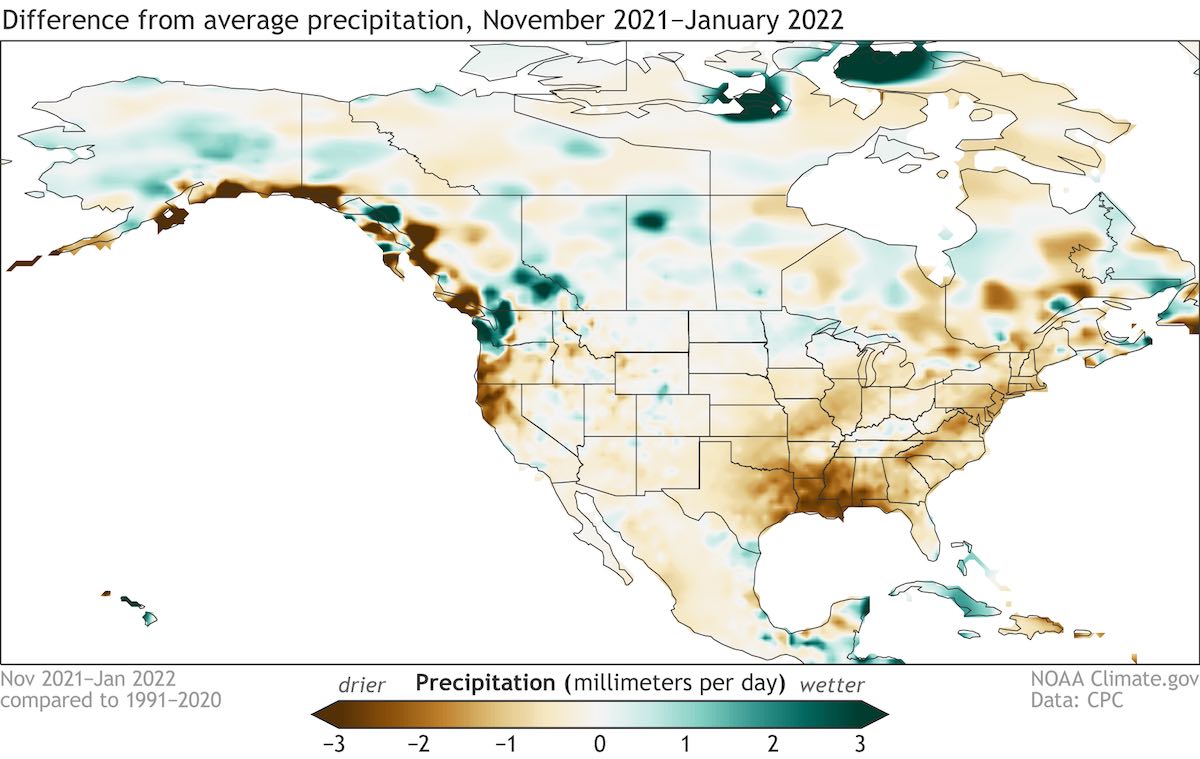
Shut up and drive
If we break December and January out individually, we can see some big changes between the two, especially in temperature, and rain/snow in California. For simplicity, I left out November here. You can toggle between the various months for precipitation and temperature in the IRI Maproom.
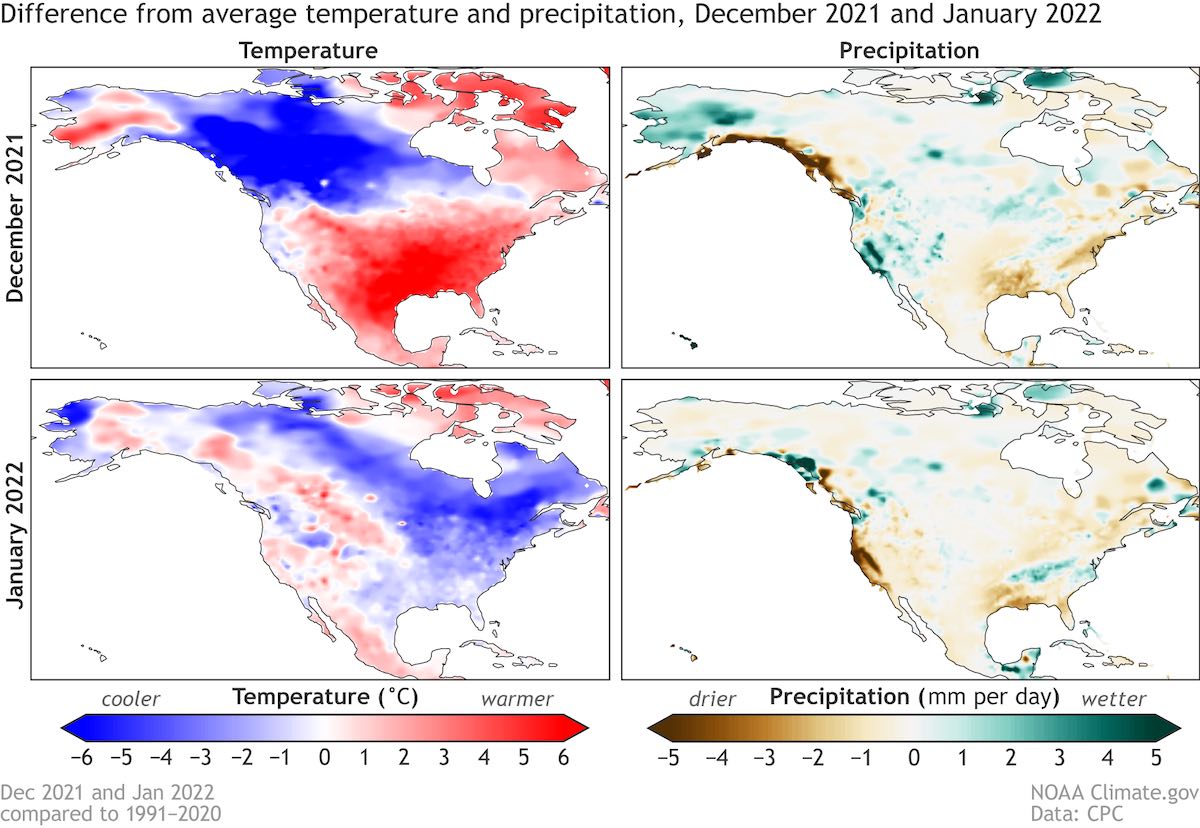
What’s behind these big swings? It’s tough to do a full attribution in the time I have to write my monthly ENSO Blog post, but we do have some thoughts about a culprit. The Pacific-North American pattern (aka the PNA) is a major atmospheric circulation pattern that has a big impact on North American weather. The PNA’s positive phase is primarily characterized by below-average air pressure over the North Pacific and above-average pressure over northwestern North America.
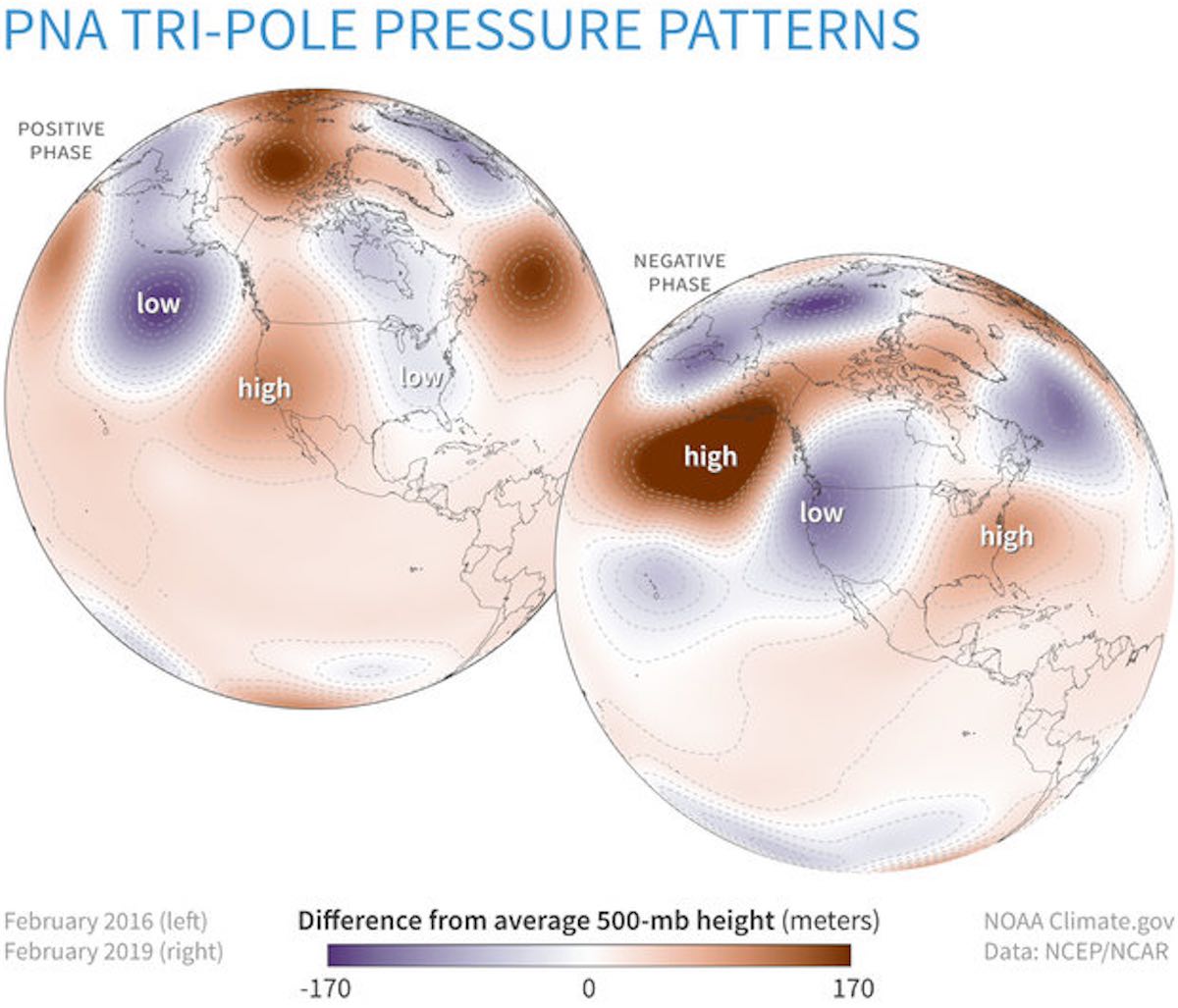
The negative phase of the PNA is the opposite: higher pressure south of Alaska, lower pressure over Canada. Be sure to check out Michelle’s post on the PNA, featuring one of our more excellent titles; the PNA Index can be viewed here. During La Niña, the PNA tends to be in its negative phase (that higher pressure over the North Pacific should sound familiar from earlier in this post). However, the PNA can change quickly, so, like the weather, the relationship to ENSO is weaker on a month-to-month basis.
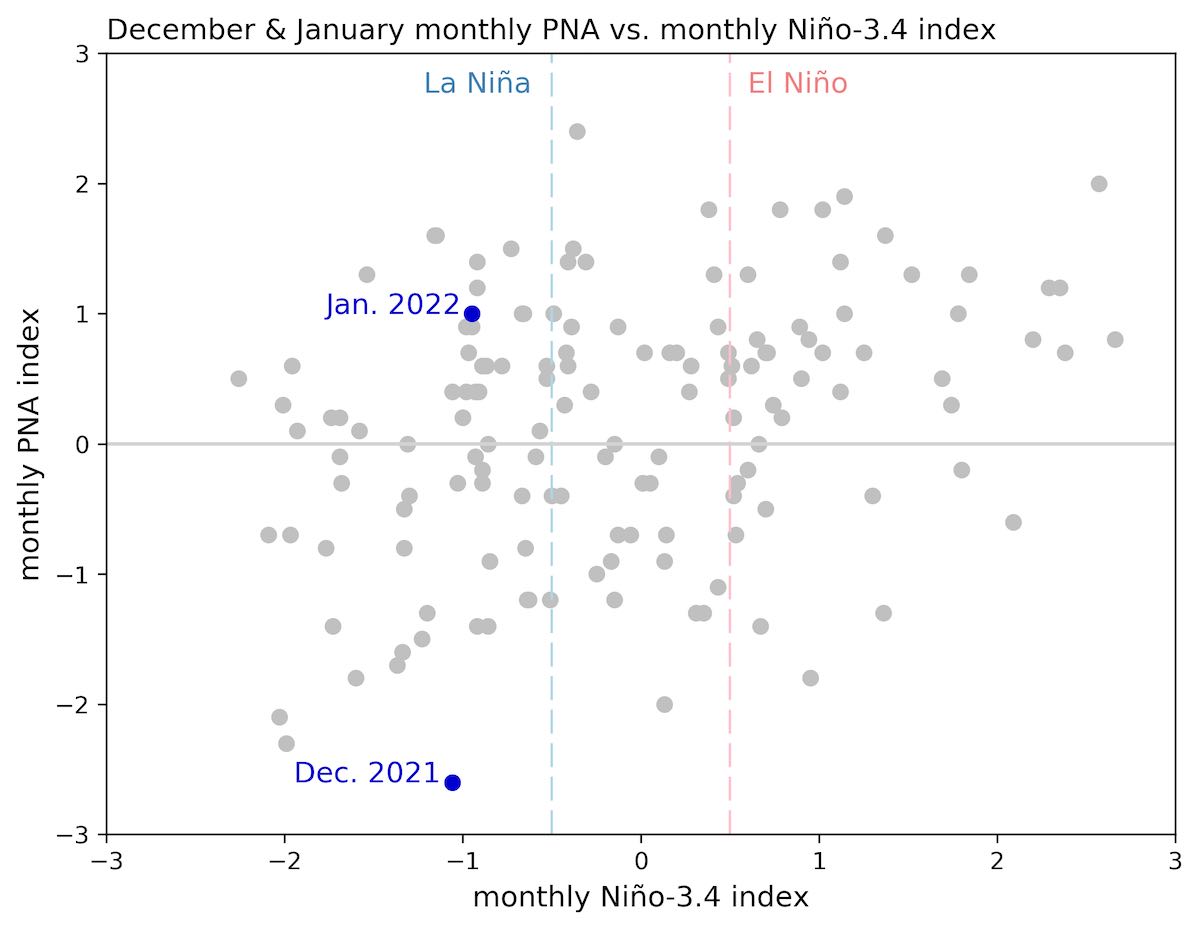
December 2021 featured the strongest negative winter monthly PNA pattern on record (1950–present). Then, in January 2022, the PNA moved into a positive phase, making the largest jump on record from one December to January. Why did the PNA flip? That is a topic for another day. The PNA can be affected by other climate patterns, but, as Michelle says in her earlier post, “a large chunk of the PNA is internally driven.” This means that apparently random, chaotic behavior, aka internal variability, often determines the state of the PNA.
The PNA is forecasted to move back into a more La Niña-consistent negative phase in mid-late February, so this La Niña is not done with us yet. With Nature behind the wheel, we’re all just along for the ride. However, that’s not going to stop us from trying to figure out where we’re going, and how we got where we are! See you next month.
This post first appeared on the climate.gov ENSO Blog and was written by Emily Becker.